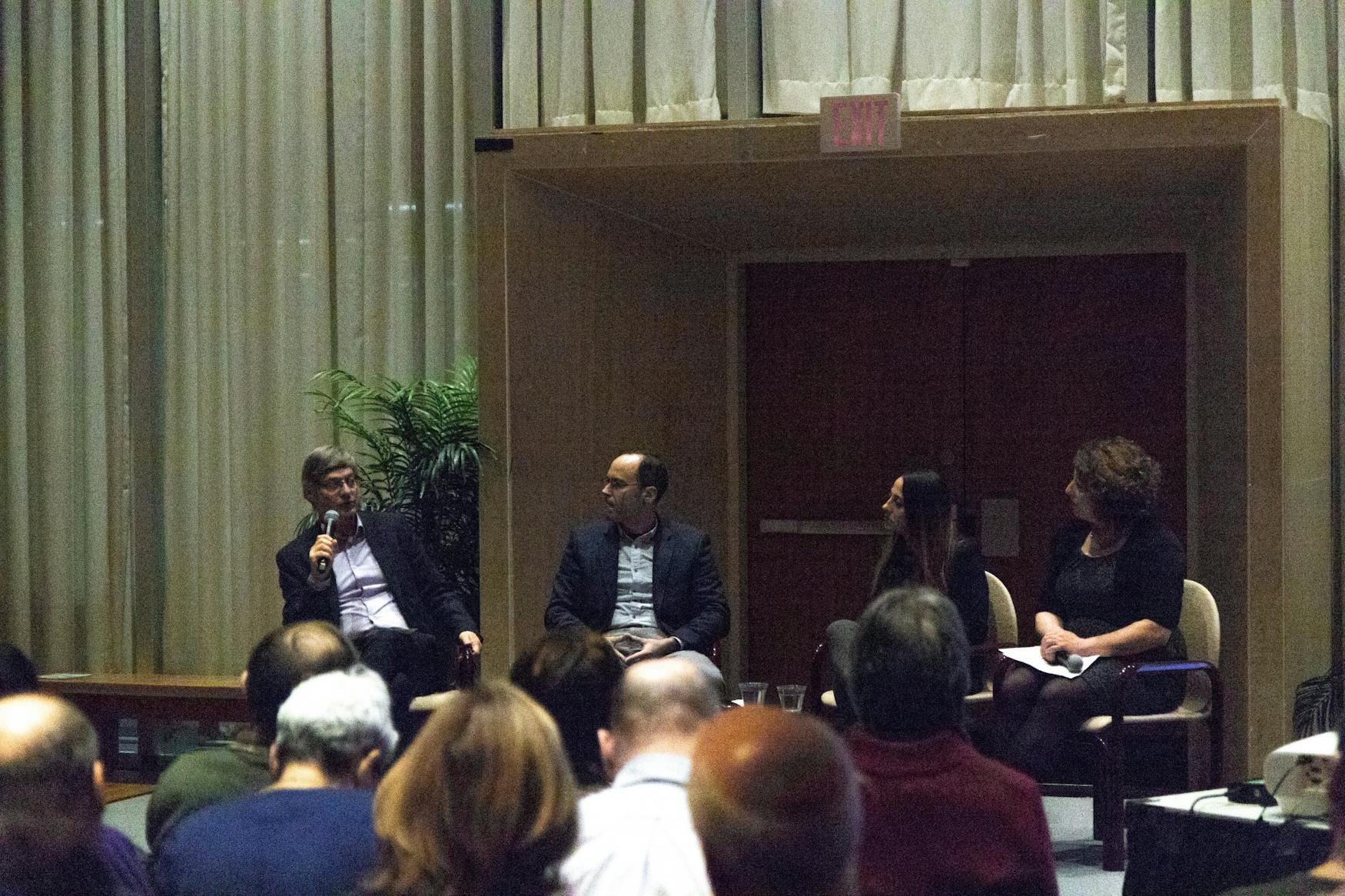Documentary depicts Jewish experience in Argentina
After the screening, a panel discussed the Jewish diaspora in Latin America.
The Schusterman Center for Israel Studies hosted a screening of “Next Year in Argentina,” a film about Argentina’s Jewish diaspora, on Feb. 12. Dalia Wassner, the director of the Hadassah-Brandeis Institute project on Latin American Jewish and Gender Studies, led a panel following the film with Raanan Rein, the vice president of Tel Aviv University, Tali Flomenhoft, the associate director of Parent and Family Giving at Brandeis and Adrian Krupnik, a postdoctoral fellow at the University of Tel Aviv.
Argentina has the largest Jewish diaspora in all of Latin America, Wassner explained, which has resulted in Israel’s Latin American population being primarily comprised of Argentinian Jews. Between 1963 and 2002, Krupnik noted that Israel took in several waves of immigrants from Argentina. This mass movement to Israel was followed by a surge of return migration to Argentina, which Krupnik said caused great tensions between Israeli press, officials and migrants.
“Next Year in Argentina” documents the story of the Jewish-Argentine diaspora’s struggle with the decision to stay in Argentina or move to Israel in the midst of Argentinian social and economic turmoil. Following events such as the 1992 bombing of the Israeli Embassy in Buenos Aires and the 1994 bombing of a Buenos Aires Jewish community center, the documentary discusses Jewish-Argentine migration, identity and Zionism.
According to the Jewish Virtual Library, Zionism is the “national movement for the return of the Jewish people to their homeland and the resumption of Jewish sovereignty in the Land of Israel.”
Rein explained that Zionism allowed for many Argentinian Jews to better assimilate within a country consisting of many immigrant diasporas. With each successive diaspora having a connection to a different “motherland,” Rein said that for Jews, connecting “with the ancient mythical homeland was a way to become Argentine, like everyone else in the immigrant society of Argentina.”
At the Tel Aviv premiere of the film in 2005, Rein noted that the expression of Zionism in the documentary was a point of contention for viewers. In fact, some audience members flagrantly condemned the directors for not being Zionist enough and “by extension, not Jewish enough.” He explained that this wave of hostility stems from a failure on the part of Israelis to understand that everyone’s identity consists of a “mosaic of components.” Whether these components are ethnic or religious, some identity components take precedence over others, “thus influenc[ing] the decision to move to Israel or go back to Argentina.”
Criticism for not being “Zionist enough,” however, extends far past the filmmakers and is often directed towards Jewish Argentines who returned to Argentina following their move to Israel, Rein said. Krupnik added that at the time of the events shown in the documentary, leaving Israel was seen as akin to committing treason. In his interviews with returnees, Krupnik noted that many individuals still felt great shame over leaving Israel; some even cried when discussing their return to Argentina. Rather than shaming or viewing these individuals as a “failure” of Israel, Rein suggested to view them as a “constant negotiation between Israel and the diaspora.” Many returnees have even positively influenced relations between Israel and Argentina, he said.
Krupnik then looked at the film through a gendered lens, noting that blaming women for return migration to Israel was “compatible with Zionist discourse.” He explained that many Zionists painted Latin American women as lazy “Jewish princesses” who were unwilling to give up their lives of luxury in Argentina to live in Israel. Rather than studying immigration patterns, many Zionists used women’s unwillingness to partake in domestic labor as an explanation of low migration rates to Israel.
Flomenhoft shared how her experience growing up as a Mexican-Israeli differed from the experiences of Argentinian Jews. The Mexican-Jewish community is a “community of communities,” she said. Unlike in the United States, Flomenhoft explained; within various ethnic communities living in Mexico, there is further division into many smaller sub-groups. Growing up attending a Zionist school, Flomenhroft said she was introduced to the importance of Israel to the Jewish people and “aliyah [immigration to Israel] as being the ultimate goal of the youth movement.”
One audience member, a Jewish-Colombian, explained that coming from a country with only 10,000 Jews — unlike Argentina with roughly 400,000 Jews — he never felt that the Jewish community ever truly assimilated. “I never felt Colombian,” he said. “I felt Jewish — and they made you feel it.”



Please note All comments are eligible for publication in The Justice.